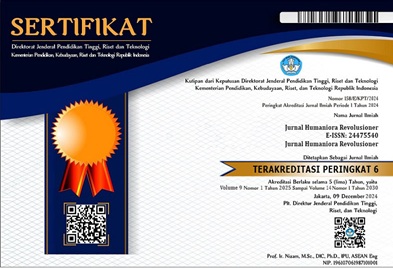PENGARUH WAKTU FERMENTASI DAN JENIS RAGI PADA PEMBUATAN BIOETANOL MENGGUNAKAN BAHAN BAKU LIMBAH KULIT NANAS DENGAN TAHAPAN HIDROLISIS SECARA KIMIAWI
Kata Kunci:
Kulit Nanas, Bioetanol, Ragi Farmipan, Ragi MauripanAbstrak
Abstrak: Tahun 2022 Provinsi Lampung mengalami peningkatan pada pertanian nanas dengan produksi nanas mencapai 861.706 ton. Tingginya produksi nanas menimbulkan sampah kulit nanas yang dapat dimanfaatkan sebagai bioetanol. Limbah kulit nanas memiliki kandungan karbohidrat yang cukup tinggi, yang berpotensi dapat digunakan sebagai bahan baku bioetanol. Pembuatan bioetanol menggunakan metode hidrolisis asam melalui tahapan pre-treatment (pencucian, pemotongan, dan penghalusan kulit nanas), proses hidrolisis menggunakan larutan asam sulfat (H2SO4) 2,5% temperature 100oc selama 1 jam, proses fementasi dengan ditambahkannya larutan seeding (larutan 2 jenis ragi). Penelitian ini dilakukan untuk melihat pengaruh 2 jenis ragi (fermipan, mauripan) dan waktu fermentasi yang dilakukan selama 24 jam, 48 jam, 72 jam, 96 jam terhadap kadar bioetanol yang akan dihasilkan dari proses pembuatan bioetanol secara kimiawi menggunakan asam sulfat (H2SO4). Sampel hasil fermentasi kemudian didestilasi dan diukur kadar etanolnya. Hasil penelitian menunjukkan penggunaan ragi fermipan dan ragi mauripan menghasilkan kadar bioetanol yang berbeda, yaitu ragi fermipan menghasilkan kadar bioetanol 1%, 1,2%, 2%, 1,2%, sedangkan ragi farmipan menghasilkan kadar bioetanol 0,4%, 0,6%, 0,8%, 0,8%. Dengan demikian dapat disimpulkan pada pembuatan bioetanol kulit nanas ragi yang efektif digunakan adalah menggunakan ragi farmipan dengan kadar etanol tertinggi 2% pada waktu 72 jam.
Abstract: In 2022, Lampung Province experienced an increase in pineapple agriculture with pineapple production reaching 861,706 tons. The high production of pineapple causes pineapple skin waste which can be used as bioethanol. Pineapple skin waste has a fairly high carbohydrate content, which can potentially be used as bioethanol raw material. Making bioethanol using the acid hydrolysis method through the pre-treatment stage (washing, cutting, and smoothing pineapple skin), the hydrolysis process using sulfuric acid solution (H2SO4) 2.5% temperature 100oc for 1 hour, the fementation process with the addition of seeding solution (solution 2 types of yeast).This study was conducted to see the effect of 2 types of yeast (fermipan, mauripan) and fermentation time carried out for 24 hours, 48 hours, 72 hours, 96 hours on bioethanol levels that will be produced from the process of making bioethanol chemically using sulfuric acid (H2SO4). The fermented sample is then distilled and the ethanol content is measured. The results showed that the use of fermipan yeast and mauripan yeast produced different bioethanol levels, namely fermipan yeast produced 1%, 1.2%, 2%, 1.2% bioethanol levels, while pharmaceutical yeast produced 0.4%, 0.6%, 0.8%, 0.8% bioethanol levels. Thus, it can be concluded that the effective manufacture of pineapple peel bioethanol yeast used is to use pharmaceutical yeast with the highest ethanol content of 2% within 72 hours.





